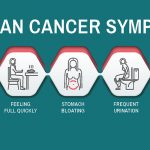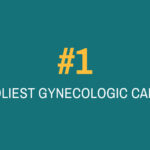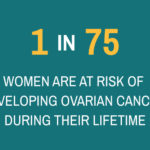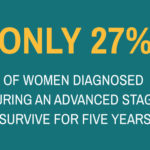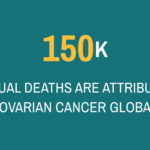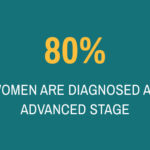WHAT IS OVARIAN CANCER?
Ovarian cancer occurs when cells in the ovary grow and divide uncontrollably. The cells may form a tumor on the ovary, or they also can break off from the main tumor and spread to other parts of the body. Although ovarian cancer can spread throughout the entire body, in most cases it stays in the abdomen and affects organs such as the intestines, liver and stomach. There are several types of ovarian cancer. However, most cancers of the ovary come from the cells that make up the outer lining of the ovary.
HOW COMMON IS OVARIAN CANCER?
A woman’s risk of getting ovarian cancer during her lifetime is about one in 67. The risk of getting this cancer and dying from it is one in 95. Ovarian cancer is the eighth most common cancer in women, excluding skin cancer. It is the fifth leading cause of cancer death in women.
WHAT ARE SOME RISK FACTORS FOR OVARIAN CANCER
The exact causes of ovarian cancer are not known. However, studies show that the following risk factors may increase the chance of developing this disease:
- Family History – first-degree relatives (mother, daughter, sister), especially if two or more have had the disease. A family history of breast or colon cancer also is associated with an increased risk of developing ovarian cancer.
- In the U.S., about 5 to 10 percent of people diagnosed with breast cancer have inherited an increased risk of developing the disease. In these cases, breast cancer runs in the family. Similarly, 5 to 10 percent of ovarian cancers diagnosed are hereditary.
- There are 2 primary genes linked with most families who have Hereditary Breast and Ovarian Cancer (HBOC): BRCA1 and BRCA2. BRCA stands for BReast CAncer. A “mutation,” or harmful genetic change, in either BRCA1 or BRCA2 gives a woman an increased lifetime risk of developing breast and ovarian cancers.
- On average, women with an altered BRCA1 gene have a 50 to 85 percent risk of developing breast cancer by age 70. Their risk of developing ovarian cancer is 40 to 60 percent by age 85.
- In women, the breast cancer risk associated with a BRCA2 mutation appear to be about the same as those for BRCA1 mutations — a 50 to 85 percent risk of developing the disease by the age of 70.For women with BRCA2 mutations the risk for developing ovarian cancer has been estimated to increase to 10% and 30% by age 70.
- CLICK HERE to learn more about hereditary ovarian & breast cancers and steps to take if you have family history and/or are interested in genetic testing.
- Age – most ovarian cancers occur in women 50 years of age or older, with the highest risk in women older than 60.
- Non-Childbearing – women who have never had children. In fact, the more children a woman has had, the less likely she is to develop ovarian cancer.
- Personal History – women who have had breast or colon cancer may be at greater risk.
- Obesity – women who are obese have a higher rate of death from ovarian cancer.
- Fertility Drugs – drugs that cause women to ovulate may slightly increase a woman’s risk.
- Hormone Replacement Therapy (HRT) – some evidence suggests that women who use HRT after menopause may have a slightly increased risk of developing this disease.
Source: American Cancer Society & National Cancer Institute
For a PDF download of our Signs & Symptoms card, click here.
To download the Basser Center Family History Guide, click here.
MORE INFORMATION ABOUT OVARIAN CANCER CAN BE OBTAINED BY CONTACTING:
National Cancer Institute at the National Institutes of Health
(800) 422-6237 | cancer.gov
U.S. Centers for Disease Control and Prevention
(800) 232-4636 (800-CDC-INFO) | cdc.gov
#1
deadliest gynecologic
cancer
80%
of women are diagnosed
at an advanced stage
27%
of women have a 5-year
survival rate after an
advanced stage diagnosis


